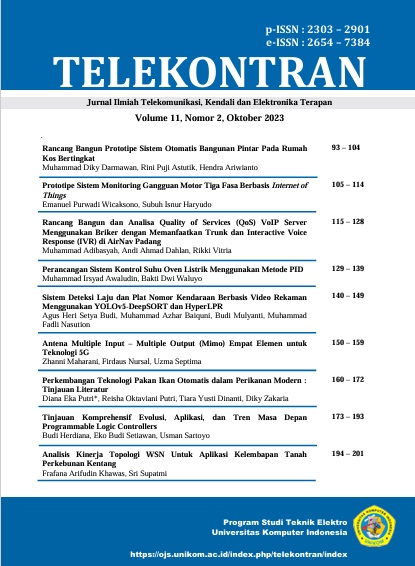Design of Electric Oven Temperature Control System Using PID Method
Main Article Content
Abstract
In a modern world filled with diverse kitchen needs, ovens have become an essential device to fulfill various cooking requirements. The availability of ovens of various sizes, operational power, and heat output is key to achieving optimal cooking results. However, temperature control in most ovens still relies on a simple on-off system, which may not be fully effective in maintaining a stable and accurate temperature. Therefore, an innovative approach is needed to improve the oven's performance, particularly in achieving and maintaining the temperature desired by the user. This research is based on the implementation of the PID (Proportional, Integral, and Derivative) Method as a control system for the oven. This method was chosen for its ability to automatically solve the output of a system, based on the proportionality, integrality, and derivativity of the difference between setpoint and actual output. The PID constant values were searched using the trial-and-error method, starting by setting all the constants Kp, Ki, and Kd to zero and increasing them until the system started to respond at Kp=20. After making repeated corrections, the static error (offset) can be resolved at Ki=0.4 and excessive oscillations can be mitigated at Kd=50. Based on the results of testing the oven's performance at temperatures of 50°C, 60°C, and 70°C, it was found that the overshoot was 80%, 60%, and 15%, respectively. Thus, the biggest overshoot is at the 50°C setpoint, and the smallest is at the 70°C setpoint. Based on three tests at different set points, the set point can track the actual output (settling time) in 2000 seconds
Downloads
Article Details
Section

This work is licensed under a Creative Commons Attribution-ShareAlike 4.0 International license.

